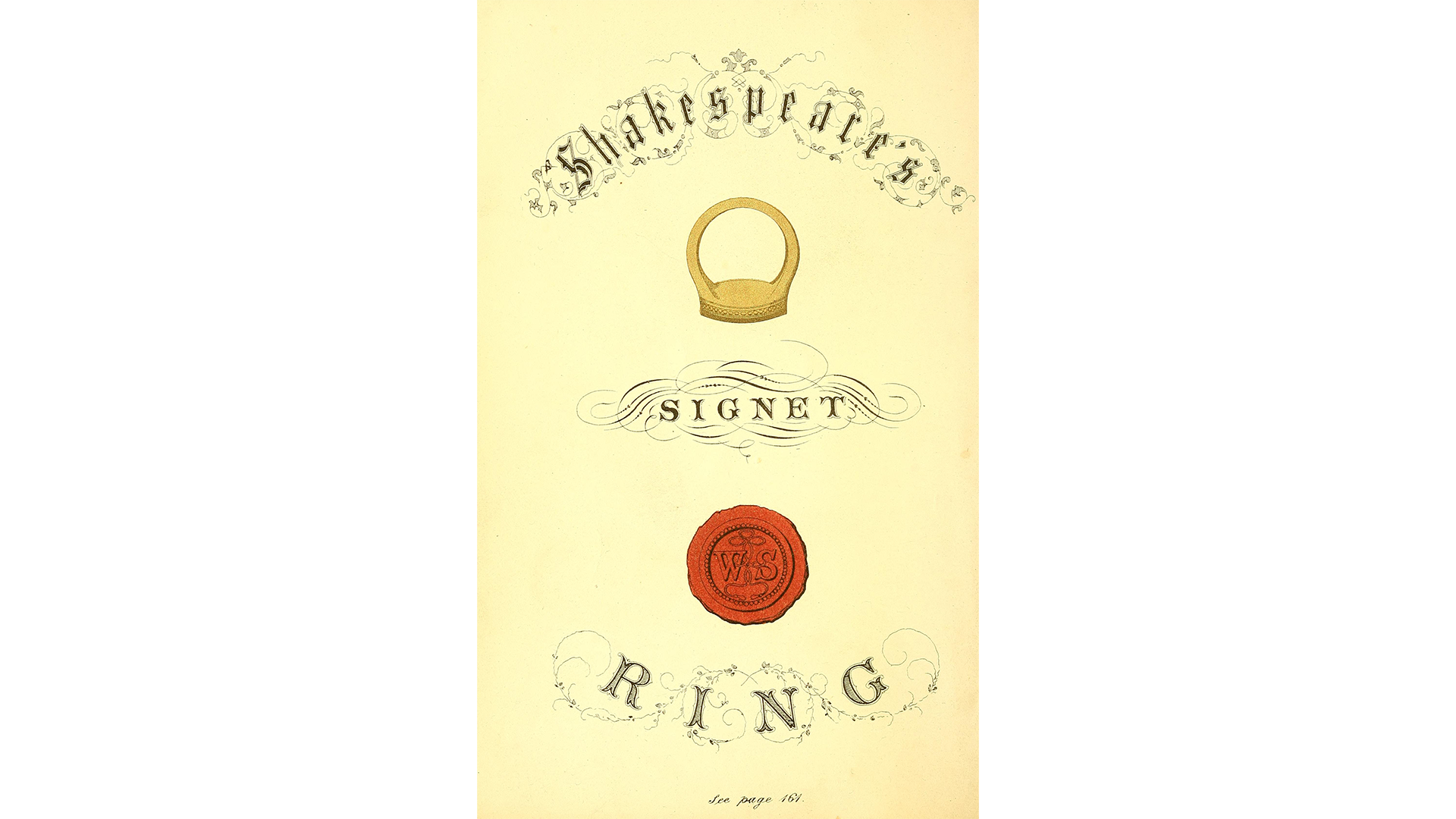Imbued with much meaning that has stayed steady across thousands of years, the signet ring remains popular today. Originating as far back as 4000 to 3500 BCE, signet rings have been used by the rich and powerful as a way of showing their identity. But it is their intriguing designs and the stories they tell that have made signet rings so fascinating. Generally, a signet ring has a flat bezel that is engraved with initials or a design that is specific to the person wearing the ring, such as a family crest, or coat of arms. For thousands of years signet rings were pressed into warm wax to seal documents or to act as a signature.
In the Beginning
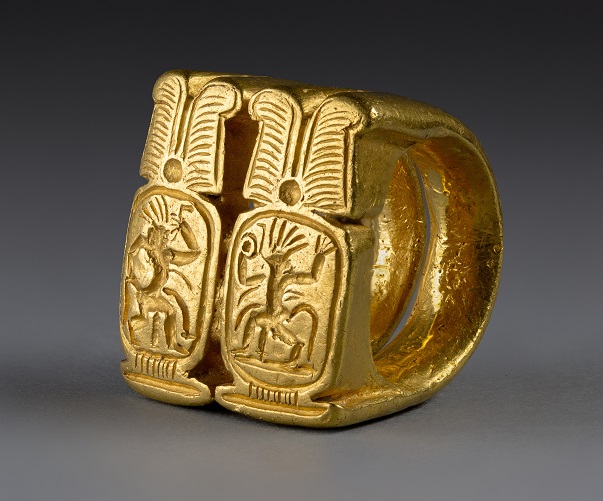
The first signet rings weren’t actually rings. Instead they were small engraved cylinders worn by the Mesopotamians on a cord around the neck or wrist. The cylinder was rolled onto clay tablets leaving an imprint.
The signet, in ring form, is thought to have first been used by the ancient Egyptians, who also believed that signet rings denoted a divine connection. The rings were worn to show political and religious leanings as well as rank. These rings used hieroglyphs, often indicating someone’s name and rank. Some of these early signet rings swiveled so that one side was strictly decorative and the other side was used to sign and seal documents. These early signet rings were worn by rulers, nobility and scribes.
The Greeks and Romans
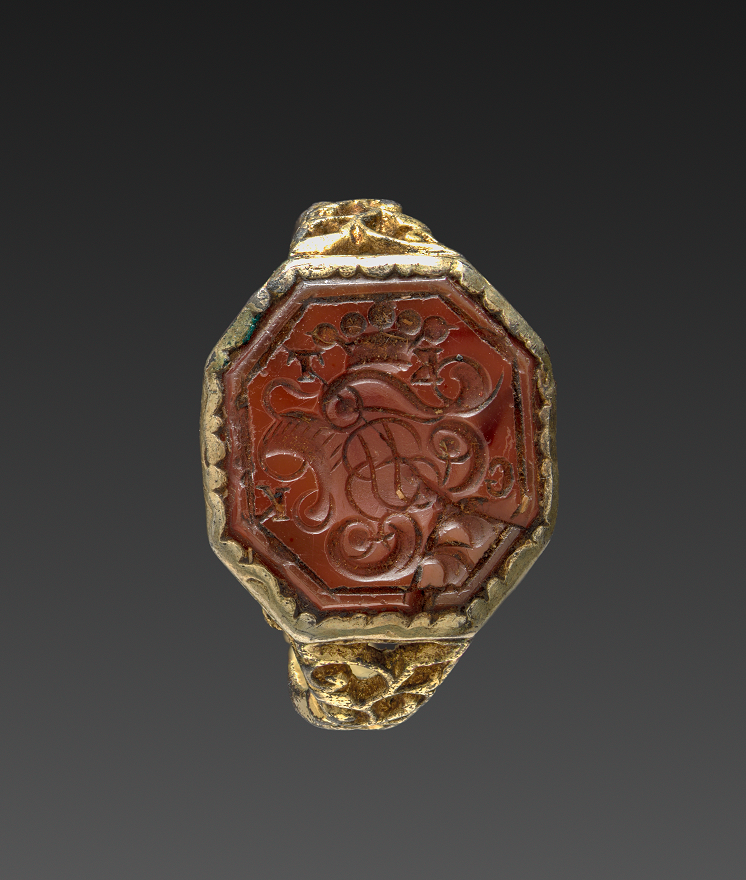
Signet rings were prominent in both Greek and Roman societies. By the Sixth Century BCE, Greek jewelers were using gold, silver or iron to make signet rings, often decorated with nature themes and also used for adornment in addition to signing and sealing documents.
The Romans were more traditional in their use of signet rings. They continued the practice of wearing a signet ring as a marker of status. The Roman senators were known to wear gold signet rings, while regular citizens wore iron signet rings. It was also the Romans who added gemstones to signet rings. Carnelian, agate and garnet were favored gems as they were readily available and easy to carve, while being strong enough to be pressed into warm wax and used as a seal without breaking.
A Necessity
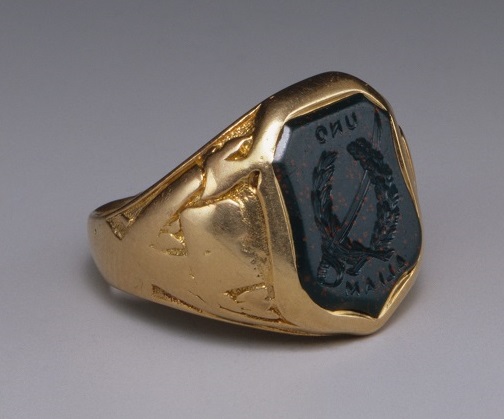
By the middle ages, signet rings had become a necessity among royals, nobles, knights and the clergy. During the 14th century, King Edward II of Great Britain, made a law that all documents must be signed with a signet ring. Their distinct markings, specific to each person wearing the ring, had become a form of identification and a way of authenticating sealed documents. Legal documents, religious records and personal correspondence were all signed and sealed with signet rings. By this time signet rings were generally engraved with a coat of arms, Latin phrases or religious symbols and were often worn on the pinky as a show of authority.
Signet rings were important not just as identifiers, but because much of the population of the time didn’t know how to read or write. A signet ring used as a signature or seal was an easy visual to interpret for those who didn’t read. The importance of a signet ring was so great at this time, that when a person died, if the ring was not passed down to the next generation, it was destroyed to make sure that no forgery or fraud took place.
Signet Rings Embellished
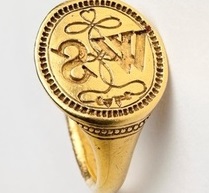
The renaissance years, which encouraged art, music and science, saw signet rings become more embellished, with gemstones and more intricate metalwork that personalized the rings even further, especially since technology now made engraving easier. By the renaissance the use of signet rings had expanded. The aristocracy and clergy continued to use signet rings, but now merchants used them as well as professionals such as doctors and lawyers who had rings with markings that identified their occupation.
During the Victorian years, signet rings remained popular, but not for the practical purposes of signing and sealing important documents. The industrial revolution had made it easier to acquire signet rings for regular people, so signet rings became popular gifts to mark milestone moments in the lives of the upper and middle classes of society. They also held a place in the pantheon of Victorian mourning jewelry.
While today, signet rings are more of a fashion statement than anything else, it is still worn by royals. King Charles III has been wearing a signet ring on his pinky for decades. Allegedly made of Welsh gold, The Prince of Wales signet ring was given to him, when he was made the Prince of Wales and he continues to wear the ring as King, showing his status, power and authority. Eventually, it will be passed down to the next generation.
Today, there are vintage signet rings available and there are also jewelers who specialize in making these pieces that incorporate symbols, initials and customized details that make it uniquely personal. Some people may be lucky enough to have a signet ring passed down to them through the generations, telling the story of a family. Whether you inherit a signet ring, purchase a vintage item, or have one custom made, signet rings are powerfully chic storytellers.
Top of page: Print of Shakespeare’s signet ring, frontispiece of “The History and Poetry of Finger-Rings” (New York, RedField, 1855) Public Domain, courtesy WikiCommons.
Authored by Amber Michelle
